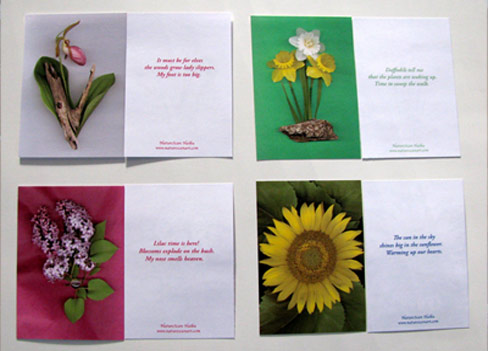HAIKU POEMS ABOUT NATURE
In 1973, the Haiku Society of America noted that the then norm for writers of haiku in English was to use 17 syllables, but they also noted a trend toward shorter haiku. This trend is borne out by the winter 2010 edition of Frogpond, which contains haiku with an average of 10.5 syllables, varying from six at the shortest to 15 at the longest. The word onji (音字; "sound symbol") is sometimes used in referring to Japanese sound units in English although this word is no longer current in Japanese. In Japanese, each on corresponds to a kana character (or sometimes digraph) and hence ji (or "character") is also sometimes used as the count unit. Although the word "on" is often translated as "syllable", in fact one on is counted for a short syllable, an additional one for an elongated vowel, diphthong, or doubled consonant, and one more for an "n" at the end of a syllable. Thus, the word "haibun", though counted as two syllables in English, is counted as four on in Japanese (ha-i-bu-n); and the word "on" itself, which English-speakers would view as a single syllable, comprises two on: the short vowel o and the moraic nasal n̩. This is illustrated by the Issa haiku below, which contains 17 on but only 15 syllables. In addition, some sounds, such as "kyo" (きょ) can be perceived as two syllables in English but is a single on in Japanese. In contrast to English verse typically characterized by meter, Japanese verse counts sound units known as "on" or morae. Traditional haiku consist of 17 on, in three phrases of five, seven and five on respectively. Among contemporary poems teikei (fixed form) haiku continue to use the 5-7-5 pattern while jiyuritsu (free form) haiku do not. One of the examples below illustrates that even the traditional haiku masters were not always constrained by the 5-7-5 pattern. Previously called hokku, haiku was given its current name by the Japanese writer Masaoka Shiki at the end of the 19th century. In Japanese, haiku are traditionally printed in a single vertical line while haiku in English often appear in three lines to parallel the three phrases of Japanese haiku. Modern Japanese gendai (現代) haiku are increasingly unlikely to follow the tradition of 17 on or to take nature as their subject, but the use of juxtaposition continues to be honoured in both traditional haiku and gendai. There is a common, although relatively recent, perception that the images juxtaposed must be directly observed everyday objects or occurrences. Haiku (俳句, haikai verse?) listen (help·info), plural haiku, is a very short form of Japanese poetry typically characterised by three qualities:
Popular Posts
-
Like many other Polynesian -descended cultures, the native Hawaiians practiced tattooing. The most heavily tattooed members of the tribe wou...
-
##title## The family of snakes in North Snakes. A quiver of cobras Charm fails on snakes to Be Afraid of Snakes. Snake Sex the num...
-
Lux Cinemaa awards 2011, cinemaa awards 2011, CineMaa Awards 2011 Contest : Nominations, Cinemaa Awards 2011 Cinemaa Awards 2011 , awarding...
-
Cross tattoos for men on arm is one design ideas which very good. i like this tattoos design, very simple and not bad. how about you ?? are...
-
Distilled water has a pH of 7 (neither alkaline nor acidic) and sea water has an average pH of 8.3 (slightly alkaline). If the water is aci...
-
Artist tattoo art design girl sexy Artist tattoo art design girl sexy Artist tattoo art design girl sexy Artist tattoo art design girl...
-
A woman's hair is one of the most forgiving characteristics about herself, it is one that she can easily change and redefine to invent n...
-
Priyadarshini Ram Reddy, also referred to as Meesala Ram Reddy in the media circles, appears to have gone into virtual hiding, after he was ...
-
By Casey Contributing Writer, [GAS] We had such a great response to last Wednesday’s post on geeky tattoos that we decided to do something ...













